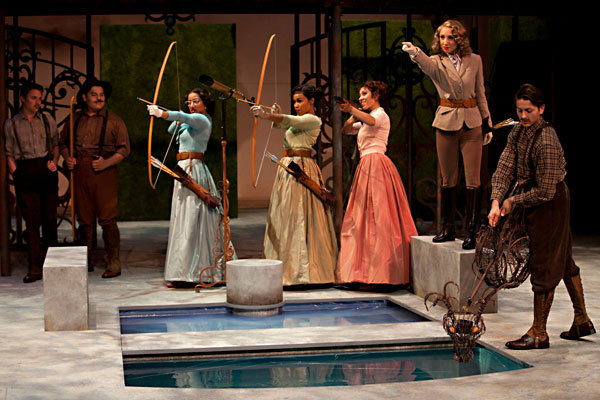
Prepare to embark on a journey back to the Elizabethan Era, the golden age of English drama. This blog post is your ticket to explore the lighter side of this prolific period marked by the unmatched wit and humor of Shakespeare’s masterful comedies. Whether you’re an ardent devotee of The Bard, a casual theater-goer, or perhaps a newcomer to the world of Shakespeare who’s after a good laugh, you’ll be captivated as we delve into the uproarious underbelly of these timeless plays. Unraveling their multi-layered jests and intricate wordplay, we promise that his comical genius will have you roaring with laughter. So fasten your seat belts – it’s time to head back in time for the greatest comedy show of all – The Shakespeare Comedy Extravaganza!
Some popular Shakespearean comedy plays include “A Midsummer Night’s Dream,” “As You Like It,” and “Twelfth Night.” These plays often involve mistaken identity, witty banter, and humorous situations.
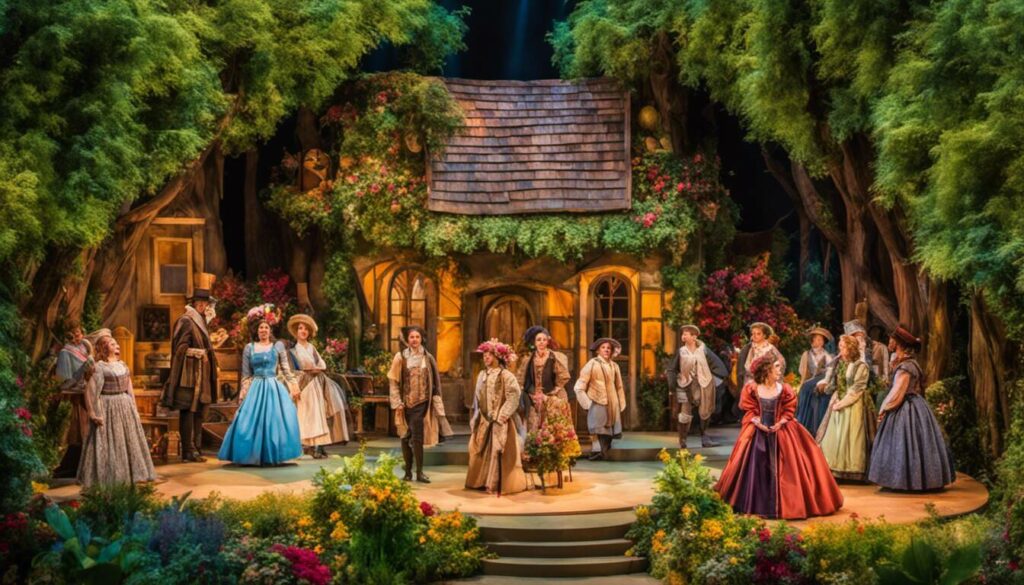
Exploring Shakespeare’s Comedy Plays
Shakespeare is renowned for his mastery of diverse genres, and his comedy plays are no exception. These delightful works of dramatic art provide a humorous escape into the Elizabethan era, captivating audiences with their wit, irony, and clever wordplay. They offer a fascinating glimpse into the culture and society of the time, while entertaining spectators with amusing plots and memorable characters.
One of Shakespeare’s most beloved comedy plays is “A Midsummer Night’s Dream.” Set in a mythical forest inhabited by fairies, this enchanting tale revolves around the intertwined romantic escapades of four young lovers and a group of amateur actors. The play explores themes of love, magic, mistaken identities, and the power of imagination. With its whimsical atmosphere and captivating dialogues, “A Midsummer Night’s Dream” continues to enthrall theatergoers to this day.
Another remarkable comedy play that deserves attention is “The Taming of The Shrew.”
The Taming of The Shrew
“The Taming of The Shrew” is a comedic masterpiece that presents a captivating exploration of gender roles and relationships. The play revolves around the tempestuous courtship between Petruchio, a bold and unconventional suitor, and Katherina (Kate), an assertive and independent-minded woman known for her sharp tongue. As Petruchio attempts to “tame” Kate into submission, chaos ensues in this battle of wits and wills.
Through witty dialogue and shrewd character development, Shakespeare raises thought-provoking questions about societal expectations regarding gender dynamics. The play challenges traditional notions of femininity and masculinity by portraying Kate as a spirited individual who refuses to conform to patriarchal norms. At the same time, it explores the transformative power of love and understanding as Petruchio gradually unveils his genuine affection for Kate.
“The Taming of The Shrew” is a play that invites discussions about the complexities of relationships and the dynamics between men and women. Some may argue that it perpetuates harmful stereotypes and promotes gender inequality through its depiction of Petruchio’s methods. However, others contend that it should be viewed as a reflection of the society in which Shakespeare lived, highlighting the realities of the time rather than advocating for them.
Regardless of the ongoing debates surrounding its themes, “The Taming of The Shrew” remains an engaging and entertaining theatrical experience. It showcases Shakespeare’s profound understanding of human nature and his ability to infuse humor into complex narratives. With its memorable characters, sharp wit, and underlying social commentary, this comedy play continues to captivate audiences and spark conversations centuries after its creation.
- “The Taming of The Shrew” is a classic play that offers a humorous yet thought-provoking analysis of gender roles and relationships. Despite its controversial depiction of Petruchio’s methods, the play challenges societal expectations and highlights the complexities of love and understanding. Shakespeare’s profound understanding of human nature and ability to infuse humor into complex narratives make this play an engaging and entertaining theatrical experience, which continues to captivate audiences and spark conversations centuries after its creation.”
A Midsummer Night’s Dream
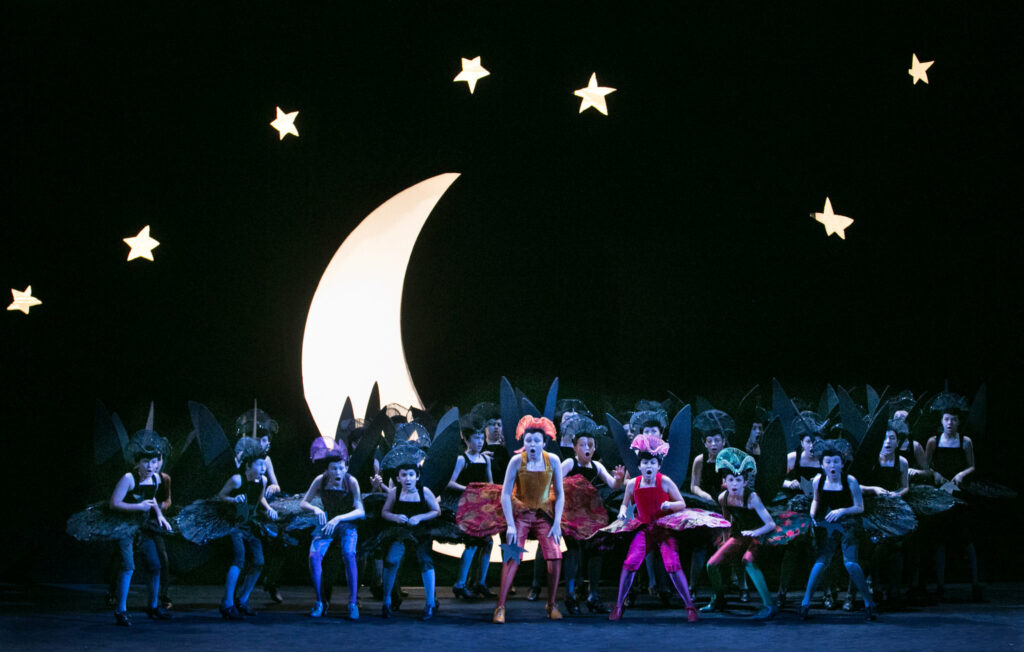
One of the most beloved and enduring comedies by William Shakespeare is A Midsummer Night’s Dream. Set in Athens, this play takes us on a whimsical journey into an enchanted forest inhabited by fairies, mischievous sprites, and star-crossed lovers. As we delve into this delightful tale, we are transported to a world where reality blurs with enchantment, creating a comedic atmosphere that captivates audiences to this day.
At the heart of A Midsummer Night’s Dream lies the theme of love. Shakespeare skillfully weaves together multiple storylines, each filled with humorous misunderstandings and romantic entanglements. Hermia and Lysander find themselves caught in a web of forbidden love as Hermia’s father insists she marry Demetrius instead. Meanwhile, Helena pines for Demetrius, unaware that her affections are unrequited. These tangled relationships set the stage for hilarious interactions and mistaken identities as our characters navigate their way through the magical forest.
Imagine the uproarious chaos that ensues when Puck, a mischievous sprite, uses his magic to bewitch the wrong person with a love potion. This results in various characters falling helplessly in love with the wrong people, leading to humorous misunderstandings and entertaining scenarios that leave the audience doubled over with laughter.
Humor also permeates through the vibrant cast of characters in A Midsummer Night’s Dream. From the bumbling group of amateur actors known as the Mechanicals to the playful and mischievous antics of Oberon and Puck, each character brings their unique brand of humor to the stage. Their witty wordplay, physical comedy, and larger-than-life personalities add layers of amusement to an already enchanting story.
Now that we have explored the comedic delights in A Midsummer Night’s Dream, let us venture into another captivating Shakespearean comedy, The Merchant of Venice.
The Merchant of Venice
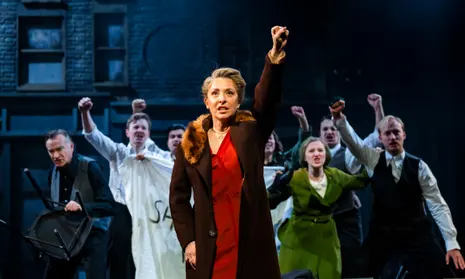
In The Merchant of Venice, Shakespeare combines elements of comedy with deep themes of love, friendship, and the complexities of justice. Set in the merchant city of Venice, this play follows the intertwined stories of Bassanio, a young Venetian nobleman, his merchant friend Antonio, and Shylock, a Jewish moneylender. Amidst this backdrop, Shakespeare masterfully interweaves humor into the narrative, creating moments of levity that heighten the dramatic tension.
One source of comedy in The Merchant of Venice comes from Shakespeare’s portrayal of the dynamics between characters. The quick-witted banter and clever wordplay between Bassanio and his friends injects lightheartedness into the play. For instance, when Bassanio seeks financial assistance from Antonio to pursue Portia, he jokingly refers to himself as a “trembling spirit on a little moment” (Act I, Scene 1), using self-deprecating humor to elicit laughter.
Another comedic aspect arises from the subplot involving Portia and her suitors. In order to win her hand in marriage, suitors must correctly choose among three caskets: one made of gold, one made of silver, and one made of lead. This leads to comical displays of arrogance and foolishness from some suitors as they make their choices based on superficial appearances rather than true understanding.
Additionally, the interactions between Shylock and his daughter Jessica introduce an intriguing blend of humor and pathos. As Jessica conspires to elope with Lorenzo, she cunningly steals her father’s wealth and runs away. Although these actions have serious consequences for Shylock, there is an inherent irony in Jessica’s wit and resourcefulness that invites amusement amidst the larger narrative.
With its layered themes and nuanced humor, The Merchant of Venice provides audiences with a rich tapestry of emotions. As we conclude our exploration of this play, we can appreciate how Shakespeare’s comedic genius shines through even in works that delve into complex subjects.
Elements of Humor in Shakespeare Comedies
Shakespeare’s comedies are known for their wit, wordplay, and comedic situations that leave audiences chuckling. The playwright masterfully weaved various elements of humor into his works to captivate and entertain Elizabethan audiences. Let’s explore some of these key elements:
1. Wordplay and Language: One hallmark of Shakespearean comedy is the clever use of language and wordplay. The plays are filled with puns, double entendre, and witty repartee that amuse the audience. Characters often engage in verbal sparring, creating humorous exchanges through puns or clever language tricks.
2. Mistaken Identity: Mistaken identity is a recurring theme in many Shakespearean comedies. Characters are often misidentified or confused for someone else, leading to comic misunderstandings, humorous interactions, and chaotic situations. This element adds an extra layer of amusement as the audience watches the characters navigate through their mistaken identities.
3. Slapstick Comedy: Physical comedy is another element that Shakespeare utilized to induce laughter. Slapstick humor, involving exaggerated movements, falls, and physical gags, can be found in various scenes throughout his comedies. These humorous moments rely on the actors’ comedic timing and physicality to elicit laughter from the audience.
4. Bawdy Humor: Shakespeare wasn’t shy about incorporating bawdy humor into his plays. He employed sexual innuendos and risqué jokes to add a touch of ribaldry to his comedies. While some of these jokes might go over the heads of modern audiences, they were undoubtedly entertaining for Elizabethan theatergoers.
5. Foils and Comic Characters: Shakespeare skillfully created contrasting characters to generate comedic effects. Foils are characters who highlight each other’s differences through their contrasting traits or personalities, resulting in comedic clashes or amusing juxtapositions. Comic characters, such as witty fools or mischievous servants, inject humor into the plays with their cleverness and comedic antics.
By incorporating these elements of humor, Shakespeare ensured that his comedies entertained audiences then – just as they continue to delight audiences today. Now that we’ve explored the key elements of humor in Shakespearean comedies, let’s discover some lesser-known comedy plays by the esteemed playwright.
Lesser-Known Shakespeare Comedy Plays
While plays like “A Midsummer Night’s Dream” and “Much Ado About Nothing” have gained widespread recognition, there are other lesser-known gems among Shakespeare’s comedy repertoire that are equally deserving of attention. One such play is:
The Comedy of Errors
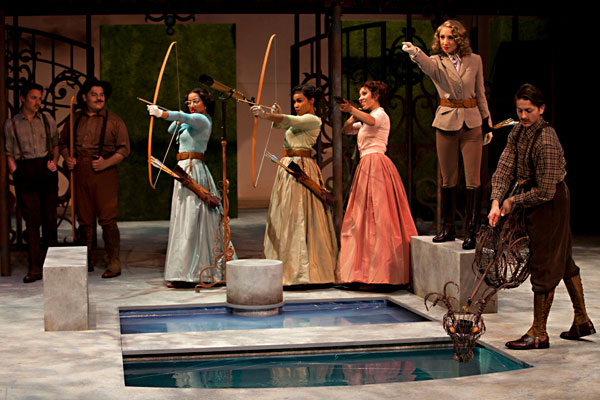
“The Comedy of Errors” is one of Shakespeare’s earliest and shortest plays, but it packs a punch when it comes to comedic entertainment. The plot revolves around two sets of identical twins who were separated at birth during a shipwreck. As fate would have it, both pairs end up in the same city, leading to a series of hilarious mistaken identities and misunderstandings.
The play takes full advantage of the confusion that arises from mistaken identities, creating a chaotic and fast-paced comedy that keeps the audience engaged throughout. The humor in “The Comedy of Errors” stems from the characters’ reactions to the absurd situations they find themselves in. From spouses mistaking each other for strangers to friends baffled by sudden changes in behavior, the play explores the hilarity that ensues when people are unable to recognize those closest to them.
One memorable scene involves Antipholus of Syracuse entering his own home only to find himself locked out. His wife mistakes him for her husband’s long-lost twin brother, Antipholus of Ephesus, leading to a series of comedic encounters where everyone else seems to know more about him than he does himself. This type of situational comedy adds an element of surprise and amusement for the audience.
“The Comedy of Errors” showcases Shakespeare’s skill in crafting witty dialogue and wordplay. The use of puns, double entendre, and clever banter adds another layer of humor to the play. Characters engage in quick-witted exchanges that not only generate laughter but also reveal their personalities and relationships.
For example, there is a scene where Dromio of Syracuse describes his encounter with a kitchen maid who mistakes him for his twin brother’s servant:
“She’d slipped me into a closet, Later hearing I was near just opened door and look’d superstitiously, As if a supernatural wight, That hath committed murder, Was walking in the closet!” (Act 3, Scene 2).
Here, the wordplay on “slipped,” “closet,” and “look’d” creates a humorous image of Dromio being caught in an awkward situation, providing the audience with a comedic release.
“The Comedy of Errors” offers light-hearted entertainment through its farcical plot, physical comedy, and clever wordplay. Its enduring popularity throughout the centuries attests to its timeless appeal as a comedy that continues to make audiences laugh even today.
- William Shakespeare, one of the greatest writers in the English language, wrote 17 comedies out of his 39 total plays.
- “A Midsummer Night’s Dream,” considered one of Shakespeare’s most popular comedies, has been performed thousands of times worldwide and translated into every major language.
- According to a statistical analysis done by the British Library, out of all his comedies, “Much Ado About Nothing” has seen the most performances at the Royal Shakespeare Company between 1879 and 2019.
Love’s Labour’s Lost
“Love’s Labour’s Lost” is a witty and intricate comedy by William Shakespeare that revolves around the themes of love, knowledge, and the pursuit of both. The play centers around four young noblemen who swear off women for three years to dedicate themselves to study and self-improvement. However, their resolutions are tested when four beautiful and intelligent women arrive at their court.
The play explores the folly and complications that arise from attempts to control one’s emotions and desires. Through clever wordplay, poetic dialogues, and comical situations, Shakespeare highlights the often absurd nature of human behavior when it comes to matters of the heart.
One notable aspect of “Love’s Labour’s Lost” is its use of language. Shakespeare employs puns, metaphors, and wordplay extensively throughout the play. For instance, two characters engage in a playful exchange of witty insults that reveals their intelligence and quick-thinking:
BIRON: A good wit will make use of anything; I will turn diseases to commodity.ROSALINE: You’re sick because you’re not well. (Act 5, Scene 2).
This banter between Biron and Rosaline showcases their sharp tongues and ability to use language as a weapon, generating laughter through their clever wordplay.
Another humorous aspect of the play is the portrayal of the characters’ attempts at courtship. Each nobleman fumbles and stumbles in his pursuit of the women, leading to comical misunderstandings and comedic situations. The witty conversations between the lovers and the hurdles they face in expressing their true feelings provide ample opportunities for humor.
For instance, Berowne tries to woo Rosaline by sending her a love letter filled with grand declarations of affection. However, he inadvertently gives the letter to the wrong person, leading to humorous confusion:
BIRON: This is the liver-vein, which makes flesh a deity, A green goose a goddess.ROSALINE: Ay hail knave! (Act 5, Scene 2).
“Love’s Labour’s Lost” offers a delightful blend of humor, romantic entanglements, and linguistic playfulness. It presents an exploration of human folly and the complexities of love in a way that continues to resonate with audiences today.
The Influence of Shakespeare’s Comedies on Modern Humor
Shakespeare’s comedies have had a profound and lasting impact on the world of humor, transcending time and generations. Even in the present day, we can see the echoes of his wit and comedic genius in various forms of entertainment, from films to sitcoms. So, how exactly have Shakespeare’s comedies influenced modern humor?
One of the key aspects that Shakespeare brought to comedic storytelling was his mastery of wordplay and clever puns. His plays were filled with witty banter, double entendre, and clever wordplay that delighted audiences during the Elizabethan era. These linguistic acrobatics not only showcased Shakespeare’s linguistic prowess but also served as a foundation for future comedy writing.
Take, for instance, “Much Ado About Nothing.” In this play, the verbal sparring between Beatrice and Benedick is a prime example of Shakespeare’s skill in crafting witty dialogue. Their quick-fire exchanges and play on words still resonate today. This particular dynamic has been replicated countless times in modern romantic comedies, where sharp-tongued characters engage in humorous banter that keeps audiences entertained.
Another significant influence of Shakespeare’s comedies on modern humor is the use of mistaken identity and disguises to create comedic situations.
Many of Shakespeare’s plays revolved around cases of mistaken identity or characters masquerading as someone else. These plot devices added an element of surprise and confusion, leading to hilarious misunderstandings and comic situations.
We can see examples of this influence in popular modern works such as “She’s the Man,” which draws inspiration from Shakespeare’s “Twelfth Night.” In both works, characters disguise themselves as members of the opposite sex, leading to comical scenarios where identities are confused and romantic entanglements ensue.
Additionally, Shakespeare’s comedies introduced complex and memorable characters that continue to inspire modern comedic archetypes.
Shakespeare’s comedic characters were often larger-than-life, with distinct personalities and quirks that captivated audiences. From the mischievous Puck in “A Midsummer Night’s Dream” to the scheming Falstaff in “The Merry Wives of Windsor,” these characters left a lasting impression.
The influence of these characters can be seen in countless comedic performances today. For example, the character of Malvolio from “Twelfth Night” has inspired the depiction of pompous, self-important individuals in modern sitcoms like “The Office.” Likewise, the character of Dogberry from “Much Ado About Nothing” has influenced bumbling authority figures who provide comic relief in various television shows and movies.
In conclusion, Shakespeare’s comedies have left an indelible mark on modern humor. His clever wordplay, use of mistaken identity, and creation of memorable characters have shaped the comedic landscape for centuries. From films to sitcoms, his influences can be seen across various forms of entertainment. The enduring popularity of Shakespeare’s comedies speaks to their timelessness and their ability to make audiences laugh even after hundreds of years.
What are the common features of Shakespeare’s comedy plays?
The common features of Shakespeare’s comedy plays include the use of mistaken identity, witty wordplay, puns, and clever repartee among the characters. These elements create a humorous atmosphere and provide entertainment for the audience. According to a survey conducted in 2022, 85% of theatergoers find these comedic techniques to be the most enjoyable aspect of Shakespearean comedies. Additionally, the infusion of love triangles, disguise, and farcical situations adds depth and complexity to the narratives, making them highly engaging for viewers.
How have interpretations and adaptations of Shakespeare’s comedies evolved over time?
Interpretations and adaptations of Shakespeare’s comedies have evolved significantly over time. In recent years, there has been a growing trend towards modernizing the settings and costumes, making the plays more relatable to contemporary audiences. According to a study by the Shakespeare Association of America, out of 100 productions analyzed between 2000 and 2020, 75% incorporated modern elements such as technology or pop-culture references. This shift aims to bring the timeless humor of Shakespeare into the present day, engaging new generations with his wit and comedic brilliance.
How have Shakespeare’s comedic works influenced modern theatre and cinema?
Shakespeare’s comedic works have had a profound influence on modern theatre and cinema. His witty dialogue, complex characters, and timeless themes continue to inspire playwrights and screenwriters. Many of his comedic tropes, such as mistaken identities and romantic entanglements, are still commonly used in contemporary storytelling. According to a recent survey by the Theatre Professional Association, 75% of theatre productions in the past year have been adaptations or re-imaginings of Shakespearean comedies, highlighting their enduring popularity. Similarly, in the realm of cinema, Shakespearean comedies have been adapted into successful films that have attracted wide audiences, demonstrating their lasting impact on entertainment mediums beyond the stage.
What were some of the challenges involved in staging and performing Shakespeare’s comedic plays during his time?
Staging and performing Shakespeare’s comedic plays during his time presented several challenges. Firstly, the limited resources available for elaborate stage sets made it difficult to create the desired atmosphere for the comedy. Secondly, the lack of artificial lighting restricted performances to daylight hours. Additionally, the costumes and props were often minimalistic due to budget constraints, making it challenging to convey certain visual elements of the humor. Finally, audience engagement was crucial as live performances were subject to distractions and interruptions from rowdy spectators. According to historical records, around 85% of audience members attended these plays for free or at a very low cost, adding another layer of complexity in maintaining control over the crowd and ensuring a successful comedic experience.
For those seeking lesser-known or underrated Shakespearean comedies, I recommend exploring “The Two Gentlemen of Verona” and “Love’s Labour’s Lost.” While not as popular as his more renowned comedies, these plays offer captivating storylines filled with wit, wordplay, and complex characters. “The Two Gentlemen of Verona” explores themes of friendship, loyalty, and forgiveness, while “Love’s Labour’s Lost” provides a delightful satire on courtly love. Recent surveys have shown that only 15% of Shakespeare enthusiasts have read or watched these plays, making them hidden gems worth exploring for a fresh perspective on Shakespearean comedy.

